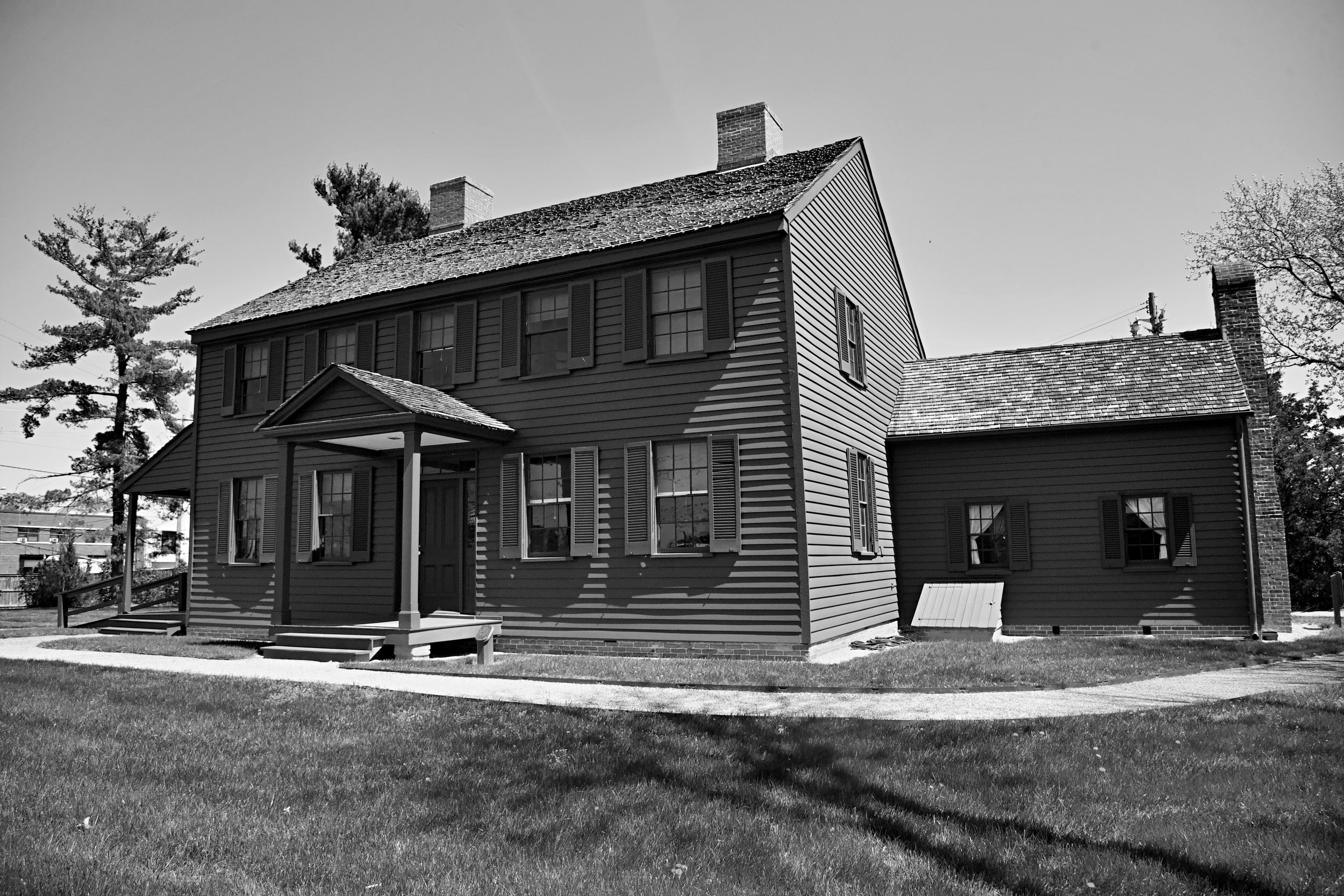The Surratt House Museum Is Telling A More Inclusive History
In 1976 — after sitting vacant for nearly 20 years, and receiving much-needed repairs — the historic Surratt’s Tavern reopened as the Surratt House Museum. Year after year, hundreds of people visited the museum to hear a retelling of local history centered on John Wilkes Booth, Civil War reenactments, and the assassination of then-president Abraham Lincoln. (Even now, still, Google Maps describes the museum as a “home and tavern that harbored Booth”). Retelling the history of the Surratt Museum only in relation to Booth’s experience and the Confederacy, according to Veronica Gallardo, the new director at Surratt House Museum, deliberately concealed the Surratt family’s custom of enslaving Black people and the history of the Clinton community.
“This historic site was preserved because of Mary Surratt and her relationship to Lincoln’s assassination,” said Gallardo, who was hired about two years ago. “But they didn’t focus on Indigenous history. They also didn’t [completely] tell the stories of enslaved Black people, and missed an opportunity to tell the stories of those who visited the tavern.”
Gallardo and her team of public historians and museum professionals are shifting away from the Booth-Confederacy-centered storyline. Instead, they are telling a more comprehensive history that digs deeper into the Surratt family’s power in Prince George’s County, their politics, and the family’s participation in Maryland’s slavocracy. In addition to all of this, Gallardo wants to move the museum forward by making it a more community-centered space.
The museum’s ongoing transformation comes, in part, at a time when conservative activists and politicians have eliminated certain books within public schools across the nation. They have banned books about U.S. chattel slavery, Civil Rights leaders, various books on Black literature, and the LGBTQ+ community. Simultaneously, this is happening at a time when museums are doubling their efforts to tell a more robust U.S. history, one that casts out the white-centered framework of history.
Bottom Up History
Gallardo, a New York native, obtained a master’s degree in Public and Applied History from New Mexico State University. She has 17 years of experience in museums. She worked on SurveyLA, one of the largest historical preservation projects in the nation. There she helped to increase stakeholders’ awareness of the importance of Latino neighborhoods. She has also worked in Brooklyn, New York at the Weeksville Heritage Center, a historic site that preserves the history of 19th-century African Americans, and Fort Monroe National Monument, a place where Indigenous history, slavery, colonialism, and the Civil War intersect. At each job, she preserved local history while also implementing programs that contributed to community flourishing.
All of her team members have degrees in the field of history. At least two are in the midst of completing doctoral programs. Previous director Laura Verge, now deceased, did not have a degree in history, but locals considered her an authority on the Civil War and the assassination of Abraham Lincoln.
When Gallardo was first hired, she wanted to understand how Verge led the organization. So Gallardo spent months reading through the museum’s documents, and teaching materials. She learned about its day-to-day programming. Under Verge, the museum conducted Civil War reenactments, mock weddings, mourning customs, and organized 12-hour tours of Booth’s escape route. The museum’s signage entailed a Confederate flag alongside the U.S. flag. However, early photos of the tavern didn’t possess the Confederate flag.
Through this process, Gallardo became convinced that the institution’s history needed to be reframed and expanded upon. She removed the Confederate flag and updated the museum’s signs. Additionally, she ceased historical reenactments and Booth’s escape route tours, citing their irrelevance.
Matt Champagne, manager of learning at the Surratt House Museum in Clinton, said the tavern is their most significant historical artifact. Booth is only a portion of that artifact’s story.
“One of the phrases I’ve heard around here is ‘leave your Booth at the door,’” said Champagne. “Booth was only at the tavern for seven or so minutes. How much should we emphasize him? How does emphasizing him allow some visitors to privilege a perspective of history that we rather downplay?”
To tell a better narrative, they’ve applied a different interpretive method. The inclusive interpretive approach provides historians with the tools to widen their historical lenses. To really dig into the stories that have been left out. Gallardo and the team refer to it as “bottom-up history.” She said telling a more complete history “will lay the foundation for everyone to understand American history.”
Omar Eaton-Martinez — who hired Gallardo when he was the former assistant division chief of historical resources for the Maryland-National Capital Park and Planning Commission in Prince George’s County — said a switch to this method of interpretation is important for the Surratt House Museum, as well as other museums across the country.
“Public history has had a legacy of telling the story from one point of view. Usually, it is from a white-male hetero point of view,” said Eaton-Martinez. “As historians, it is important for us to disrupt that, so we can tell a more complete narrative. It really helps to inform the consciousness of our communities.”
Their Businesses Included Slavery
The rusty-red museum sits at the corner of Brandywine, and Woodyard roads, a busy intersection in Clinton, Maryland. It resides amid a middle and working-class African American community. The town was once named Surrattsville due to its connection to the family. Surrattsville High School, a mostly African American school, is about a mile away from the museum. The school was built sometime after the Civil War, according to its website. Referencing Mary Surratt, the website reports that she was a victim of the Civil War, a notion that operates as historical propaganda.
Historians believe enslaved Black people may have built the tavern in 1852 on 300 acres of land that the Surratt family owned. The family — John, Sr., Mary, his wife, and three children (John, Jr., Isaac, and Anna) — lived at the tavern. However, the tavern also housed a number of businesses. It was a lodging place for travelers, something like a modern-day hostel. It was also the town’s original post office. John, the husband, was the town’s postmaster. Additionally, it served as the town’s initial polling place, where white people voted for federal and local officials. In Maryland, at that time, neither enslaved nor free Black people were allowed to vote. The Surratt family also owned a house in Washington, D.C. Mary transformed that property into a boarding house to pay off debt after her husband’s death.
The tavern opened during the height of the county’s slavocracy. According to the Maryland State Archives, by 1850, there were 879 enslavers in the county. Prince George’s County had the highest number of enslaved Black people, who were held captive in prison industrial labor camps (plantations). Enslaving people was also a part of the family business. The county had one of the lowest populations of free Black people. Maryland, a border state, adopted a new state constitution and ended chattel slavery in 1864. However, the state still allowed “apprenticeships,” where children of formerly enslaved people were made to work. It was another form of slavery.
Museum historians, so far, have found that the Surratt family enslaved about 14 Black adults and an unknown number of children. A list of their names is posted on a wall near the front entrance. Rachel Semus/Cephas, an enslaved Black woman, was a chef who labored for the family. Logan Wills Elizondo, museum interpreter, and Ksenia Bradner, volunteer coordinator, who both gave me a tour, said Rachel prepared meals for the family and tavern guests. Though enslaved people lived at the property, during a 2010 interview, Verge said the only real value was its connection to Lincoln.
“The Surratt House Museum wouldn’t deserve a paragraph in any history book if it were not for the Lincoln assassination,” she said.
“Outlines In History” is an exhibit that tells the stories of enslaved Black people, who were known as the property of the Surratt family. The exhibit is meant to acknowledge the Surratt family’s participation in chattel slavery. Rhiannon O’Neil, collections manager at the museum, headed up the endeavor to curate the exhibit using research conducted by a Howard University doctoral student. (Rhiannon’s pronouns are they/them). White U.S. citizens organized a legal system that gave Black people - enslaved and free - little to no agency.
“The exhibit is a first step in trying to change that legacy,” they said. “We want to be honest, inclusive, and authentic about the difficult history that took place here.”
Semus/Cephas and Henry Hawkins, who was also enslaved to the Surratt family, testified on Mary’s behalf during the trial. Due to the lack of historical records, it is not clear why they testified. She was accused of being a co-conspirator in Lincoln’s assassination. Hawkins and Semus/Cephas said Mary, their enslaver, was kind and that she supplied Union soldiers with food. During my tour of the museum, Wills Elizondo and Bradner said we must understand these testimonies within the context of Maryland’s slavocracy. Within the U.S. legal system, Black people, enslaved and free, had little to no agency.
To separate business life from their private life, certain rooms within the tavern were reserved for public use, while others were reserved for private use. The public rooms were for travelers, the post office, voting, eating a meal, drinking, and lodging. Wills Elizondo and Bradner said male overnight travelers slept on the second level, sharing one room. The women stayed in another room across the hall.
The privately used rooms are where the family would sleep and gather. Mary and John’s bedroom is on the second floor. However, in a family room, on the first level, is Mary’s desk, which remains the only original artifact in the tavern. All other artifacts — tables, beds, stoves, toilets, beds, etc. — are representatives of the time period. On the wall, above the desk, hangs a portrait of Mary. Across the room from Mary’s portrait hangs a picture that depicts the hanging of Mary, Lewis Powell, David Herold, and George Atzerodt at Fort McNair, a military base in Southwest Washington, D.C. Mary constantly stares at her death.
Wills Elizondo said, based on historical evidence, that Mary was undoubtedly a co-conspirator in the killing of Lincoln, which is the uncompromising position of the museum.
“She was guilty,” said O’Neil. They said the evidence is clear. In the past, the museum didn’t take a position on whether Mary was guilty or not.
Mary was a native Marylander. Religiously, she grew up attending an Episcopalian church but converted to Roman Catholicism while attending a boarding school. John and Mary sent their children to a Catholic school. Mary also helped to raise funds for St. Ignatius Church, which is a historical marker in Oxon Hill, Maryland. Additionally, Wills Elizondo and Bradner said Mary’s letters seem to reveal that she had an affair with a local priest.
At many points in their lives, the Surratt family struggled financially. John, her husband, was often in debt. He was also an alcoholic and gambler. The couple had a tumultuous marriage.
“Mary had her hands full when she married John at about 16 years old,” said Kate Clifford, historian and author of “Assassin’s Accomplice: Mary Surratt and the Plot to Kill Abraham Lincoln,” during a speech at the U.S. National Archives in Washington, D.C. “Her life was turbulent because of John’s erratic behavior.”
John, Mary’s husband, died in 1862. John Surratt, Jr. became Surrattsville’s postmaster. However, he used the position to smuggle dispatches to the Confederates in the Deep South about the Union soldier’s activity in Prince George’s County. Eventually, Union soldiers discovered that he was a spy, and stripped him of the postmaster position, putting the family in a financial crisis. He never received jail time for that. Isaac was a Confederate soldier in the Civil War. Mary was aware of all of this.
More Than A Museum
Galllardo is not only transitioning the museum’s educational materials, but also has plans to transform the site’s buildings and renovate the outdoor area. She wants to add sheltered outdoor eating spaces, a space for public programs, and possibly community gardens. She desires for it to be a place where residents can sit and enjoy the grounds. Not only that, but she wants the site to be a part of the community, instead of something that is solely historic.
Furthermore, she envisions it as a place to host community conversations. For example, on September 16 the museum will host “Echoes of the Enslaved.” The event will use archeology and public history to talk about the history of slavery in Maryland as well as racism, and how Black people — enslaved and free — resisted voter suppression. Gallardo said we need to talk about the history of enslavement alongside resistance, and how Black people have overcome.
“We can use this place to have honest and relevant conversations,” she said to me while sitting in her office.
Champagne said the museum is interested in informing visitors about the impact of Lincoln’s assassination, Reconstruction-era politics, and the era’s connection to the 21st century.
Furthermore, Gallardo wants to use the museum as a voter registration site. There’s more. She asks: “What if the museum were a place that taught local and national history to those who want to be US citizens?”
“Museums can be a place that helps to enhance society,” she said.
Gallardo believes museums can do more than collect objects and hold histories. The museum has partnered with PG County Changemakers and Life After Release, both community nonprofit organizations that engage in local politics.
“History is connected to everything,” explained Gallardo. “We use history all the time. So why not be a site that can partner with community organizations…that are really trying to make a change.”
Read Our Other News









